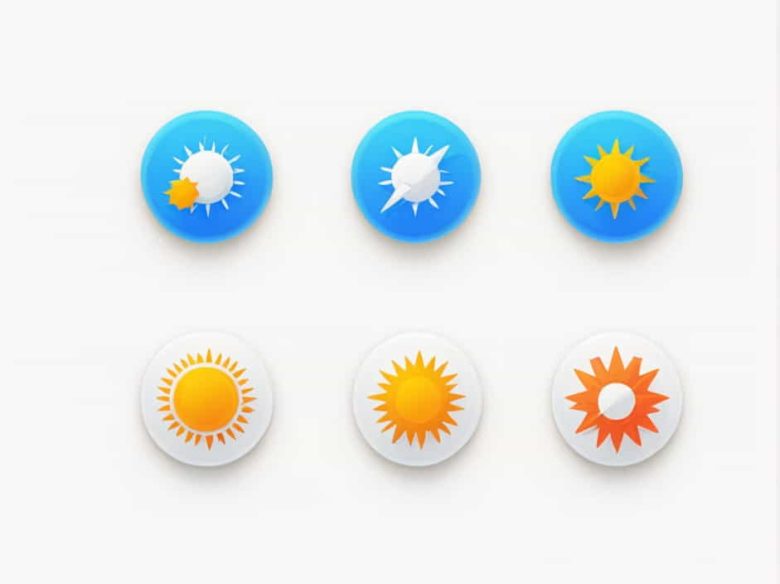Perihelion is the point in Earth’s orbit where it is closest to the Sun. Many people assume that this happens during the peak of summer, but in reality, perihelion occurs in early January, during the winter in the Northern Hemisphere.
This topic explains when perihelion occurs, why it happens, and how it affects our seasons and climate.
Understanding Perihelion
What Is Perihelion?
- The term “perihelion” comes from the Greek words “peri” (near) and “helios” (Sun).
- It refers to the point in Earth’s elliptical orbit where it is closest to the Sun.
- The opposite of perihelion is aphelion, which is when Earth is farthest from the Sun.
When Does Perihelion Occur?
- Perihelion occurs around January 3rd or 4th each year.
- The exact date varies slightly due to the gravitational interactions of Earth with other planets.
How Close Is Earth to the Sun at Perihelion?
- At perihelion, Earth is about 147.1 million kilometers (91.4 million miles) from the Sun.
- This is about 5 million kilometers (3 million miles) closer than during aphelion in July.
Why Does Perihelion Occur in January?
Earth’s Elliptical Orbit
- Earth does not orbit the Sun in a perfect circle, but rather in an elliptical (oval) shape.
- This means there are times when Earth is closer or farther from the Sun.
- The tilt of Earth’s axis (23.5 degrees) is what primarily drives seasonal changes, not the distance from the Sun.
Effect of Gravity from Other Planets
- The timing of perihelion changes slightly each year due to the gravitational pull of Jupiter and other planets.
- Over thousands of years, perihelion gradually shifts in a process known as perihelion precession.
How Does Perihelion Affect Earth?
1. Does Perihelion Make It Hotter?
- Many people think that being closer to the Sun should make Earth warmer, but the effect is minor.
- The difference in solar energy received at perihelion is only about 3.5% more than at aphelion.
- The tilt of Earth’s axis has a much greater impact on seasonal temperatures than its distance from the Sun.
2. Why Is It Winter in the Northern Hemisphere During Perihelion?
- Earth’s seasons are caused by the tilt of its axis, not its distance from the Sun.
- In January, the Northern Hemisphere is tilted away from the Sun, leading to winter.
- The Southern Hemisphere is tilted toward the Sun, experiencing summer.
3. Does Perihelion Affect Day Length?
- Yes, but only slightly.
- When Earth is at perihelion, it moves slightly faster in its orbit, making winter in the Northern Hemisphere shorter than summer.
Comparison: Perihelion vs. Aphelion
| Feature | Perihelion (January) | Aphelion (July) |
|---|---|---|
| Distance to Sun | 147.1 million km | 152.1 million km |
| Speed of Earth’s Orbit | Faster | Slower |
| Solar Energy Received | 3.5% more | 3.5% less |
| Northern Hemisphere Season | Winter | Summer |
| Southern Hemisphere Season | Summer | Winter |
Effects of Perihelion on Climate
1. Impact on Weather Patterns
- Although perihelion does not directly control seasons, it can slightly influence global climate.
- The Southern Hemisphere experiences warmer summers because it is closer to the Sun at perihelion.
2. Shorter Winters in the Northern Hemisphere
- Since Earth moves faster around the Sun at perihelion, winter in the Northern Hemisphere is slightly shorter than summer.
3. Long-Term Changes in Climate
- Over thousands of years, perihelion shifts due to a cycle called Milankovitch cycles.
- This affects Earth’s climate, contributing to ice ages and warm periods.
Interesting Facts About Perihelion
1. Other Planets Also Have Perihelion
- Every planet in the Solar System has a perihelion and an aphelion.
- Mercury has the most extreme orbit, with its perihelion distance much closer to the Sun than its aphelion.
2. The Date of Perihelion Is Slowly Changing
- Currently, perihelion occurs in early January.
- In about 10,000 years, it will happen in July due to Earth’s changing orbit.
3. The Difference in Solar Energy Is Small
- The additional solar radiation Earth receives at perihelion is only about 3.5% more than at aphelion.
Perihelion occurs every January, when Earth is closest to the Sun. However, this does not cause seasons, since they are controlled by Earth’s axis tilt. While perihelion slightly affects global temperatures and seasons, its impact is much smaller than factors like atmospheric conditions, ocean currents, and greenhouse gases.
Understanding perihelion helps us appreciate the complex movements of our planet and how they influence Earth’s climate over long periods.



